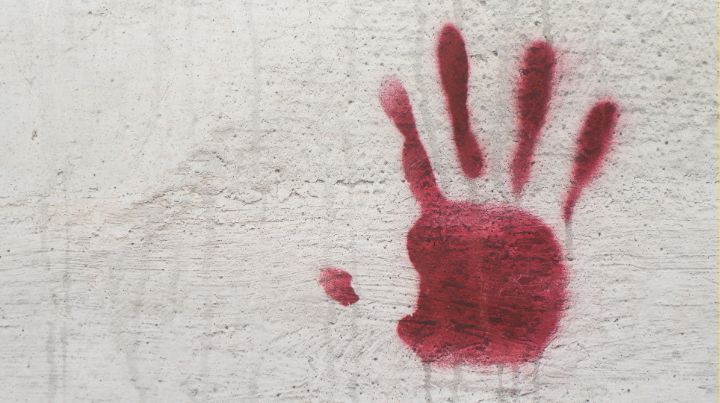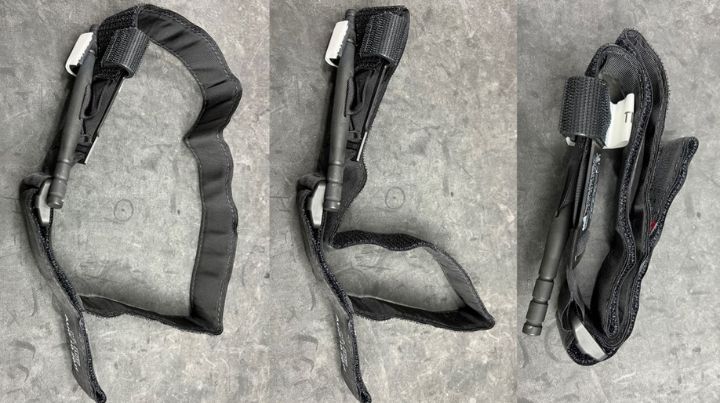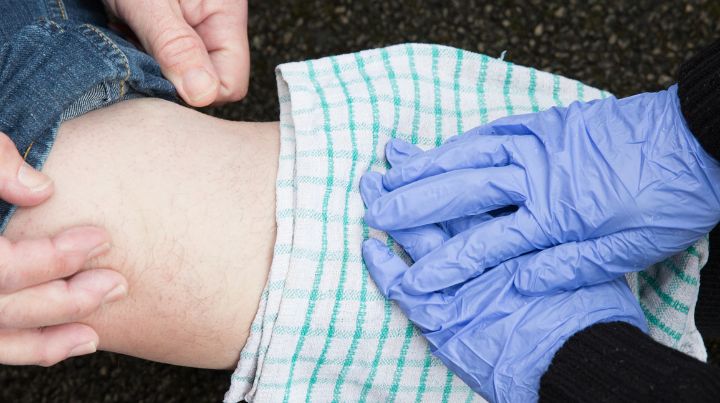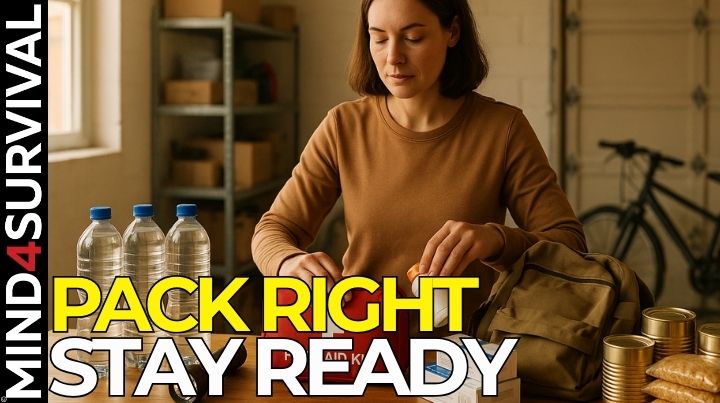Prepping for Massive Bleeding Scenarios

One of the most important medical skills we can know and possess is stopping massive bleeding. We are exponentially more likely to need medical skills than any defensive skills. If we are in a situation that requires our defensive skills, it is just as likely to require our medical skills. The same can not be said for the inverse. Massive bleeding from the extremities is the number one preventable death on the battlefield. That means that those casualties would not have died if the patient or someone else had been able to stop the bleeding. They would survive. Apply that to our own lives with car crashes, workplace injuries, hunting and fishing accidents, and active threat incidents.
Massive Extremity Bleeding
Massive bleeding from the extremities is considered preventable because we can quickly prevent blood loss with a simple intervention, the tourniquet. Tourniquets are simple to learn how to apply, easy to carry, and can be applied very fast. If you're limited on carry/cargo space for your EDC, a tourniquet should be high on your priority list. There are several models out there; some are less bulky and may work better on small-limbed people, but I would place my trust in the effectiveness of the CAT and SOF-TW.
Whichever models you carry, I suggest training with them and learning how to apply them properly. This includes your family members or travel partners. Depending on the severity and location of the massive bleed, we can bleed out in 2-5 minutes and lose enough to go unconscious in 90-120 seconds. The standard is to be able to apply a tourniquet on our own limb in 30 seconds. This is highly achievable with a solid understanding of the application and minimal but regular practice.
Non-Extremity Bleeding
For massive bleeds in locations other than the limbs, like armpits and groin, we can apply the technique of packing the wound with either hemostatic (bleeding control) gauze or non-hemostatic gauze and then creating a pressure dressing over the packed gauze. In a dire situation, we can use any clean (or mostly clean) material to pack the wound. Tourniquets should be carried or stored in a ready bag out of the protective packaging and can be prepped with a big loop folded over to minimize size. There are many techniques to carry Tourniquets for EDC, but the priority should be for ease of rapid access and deployment, usually by either hand.
Direct Pressure
For either method of stopping massive bleeding, immediately apply direct pressure to the point of bleeding while a tourniquet or wound packing material is grabbed. To properly apply a tourniquet, they should be placed high and tight on the extremity, near the groin or armpit. If placed over clothing, make sure there is nothing in the pockets that would interfere with the pressure applied by the tourniquet. Pull the strap's tail as tight as possible before turning the windless (most tourniquets will only get 1-3 rotations after locking down the tail) and secure with velcro if required. Then turn the windless until the bleeding stops. Secure the windless. Keep the tourniquet tight and check on it again if you move the casualty. Seek the next level of care or transport to a hospital. Do not remove a tourniquet once applied.
Wound Packing
For wound packing, locate the bleed and apply direct pressure, most likely with one or two fingers. Using your other hand unravel the gauze and guide the end into the wound with your fingers to replace the fingers applying direct pressure. You will continue to pack gauze into the wound, replacing the fingers and applying direct pressure until you can't get more material in the wound. Apply direct pressure to the wound packing material for 3 minutes when using hemostatic gauze and 10 minutes with non-hemostatic gauze. Then we can apply a pressure dressing like an Israeli bandage over the wound pack for transport. Do not pack a wound to the abdomen, chest, or neck to prevent complications with breathing. Injuries in those areas are usually too deep to pack and apply pressure to the bleed effectively.
Stop The Bleed
As with any skill, seek out highly experienced professionals for proper training. A good source is Stop the Bleed. They provide information, training, and medical supplies. You can carry tourniquets on your person, medkits stored in your backpack or vehicle, work, and anywhere else you may need one. Purchase from reputable sources, as there are many inferior knock-offs at highly discounted prices. Your life is worth the money. Pay for real ones. If you store your tourniquets in direct sunlight or exposed to the environment, consider inspecting them and changing them out as needed.
Additional Resources:
Related Articles
FREE Guide
Read the Best Seller
Join Mind4Survival
Stay informed by joining the Mind4Survival! 100% Secure! 0% Spam!
Affiliate Disclosure...
Mind4Survival is a free, reader-supported information resource. If you make a purchase through our link, we may, at no cost to you, receive an affiliate commission.
Do You Want To Be Ready No Matter What?

Download our free 39-page guide with interactive, 7-Day Emergency Kit Checklist and take the first step toward real preparedness.
- Know exactly where to start.
- Save time and money.
- How-to build a complete Basic Emergency Kit.
- Level up your safety and security.
Join Mind4Survival
Stay informed by joining the Mind4Survival! 100% Secure! 0% Spam!








I have been learning about the benefits of Yarrow and it’s blood clotting benefits. As I hike along I now notice how widely it grows in my area. I was wondering if you include these natural remedies in your articles.
My wife takes a steroid for the past 59 years (keeps her live, which is a good thing). One of the side effects of using steroids long term is very thin skin. My wife’s skin is rice paper thin. A simple bump into a drawer knob results in a large black/blue bruise. Simple scratches and cuts that would result a normal band-aid for you and me, become major cuts requiring butterfly stitches (I buy Butterflies by the 100/box and go through them). BTW: I’m very good a butterfly stitches. The results are my wife’s scarred arms look like she fought Freddie Kruger.
The worse yet was about 6 years ago when she twisted her right ankle and fell. At first it seemed like a simple fall……then the opposite pants leg started turning dark and a growing puddle of blood was forming on the hardwood floor. She felt nothing and said, “Aw, crap,” when she saw the blood. I pulled up the leg of her pants and skin from just below her knee to just above her ankle was gone. In twisting her ankle and trying not to fall, she put all of her weight on her left leg. The stress on her skin literally snapped her skin. I had her lift her leg and placed her foot on the rung of a stool. My Boy Scout son ran and grabbed a bath towel. I held it against her wound and told my son to go to his room and grab a belt. I turned it into a makeshift tourniquet. Called 911 and waited. When the EMTs arrived and saw the puddle of blood and blood soaked towel they undid my tourniquet and removed the towel. The EMT yelled, “Hey guys….come here you gotta see this!” That’s never a good thing to hear an EMT say. They wrapped her leg in what I found out is an Israeli Bandage (I now have several). The EMT told us we did good. The doctor at the ER patched her up.
Lessons:
– I now have tourniquets and Israeli Bandages in two bathrooms and both vehicles along with the knowledge on how to use them.
– I have petroleum bandages of different sizes. That’s good stuff for skin tears.
– I thought I had a “pretty good” first aid kit. I was wrong. My home First Aid Kit easily doubled in size.
– I took a First Aid class at the local Community College and a couple EMT-level classes.